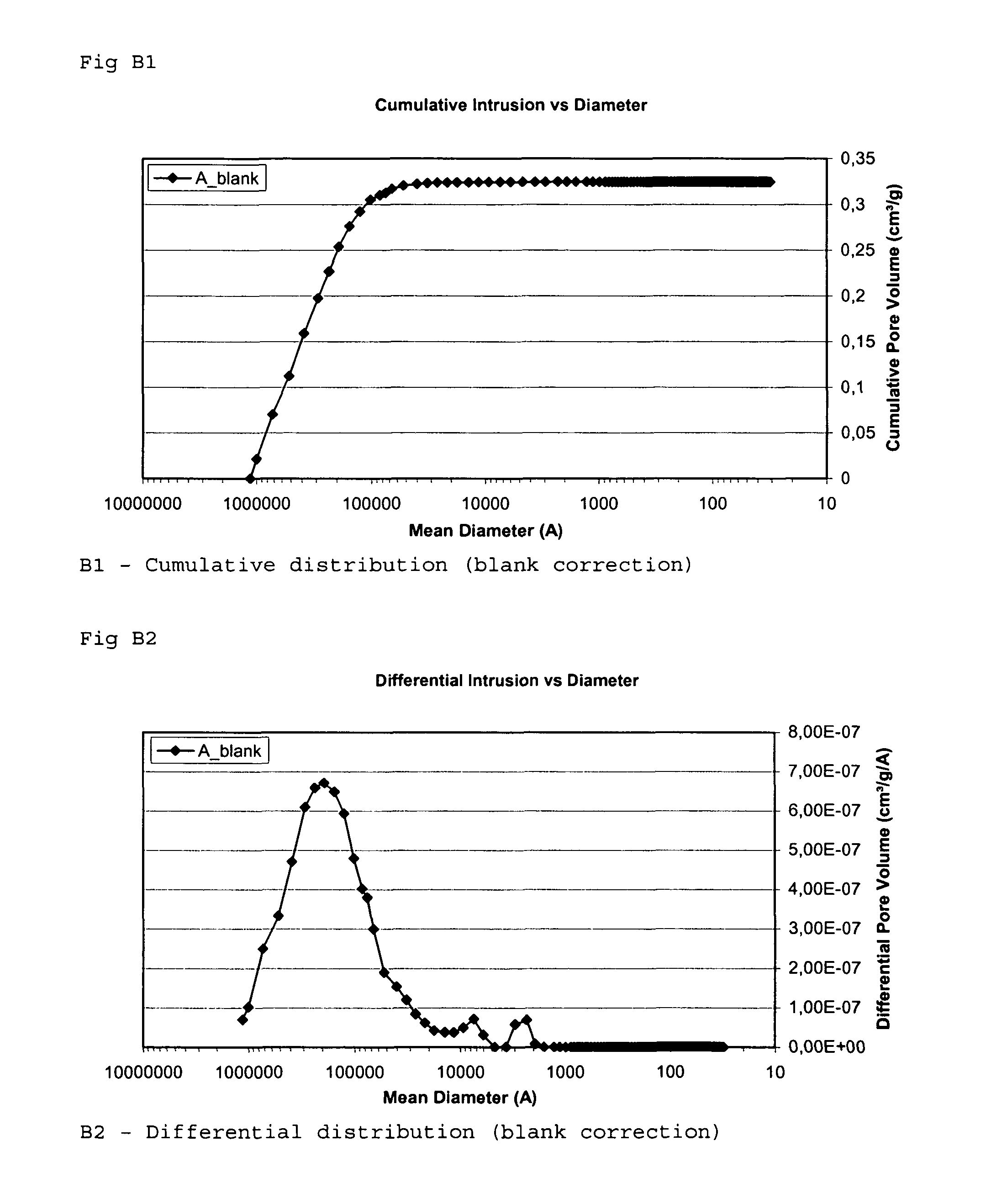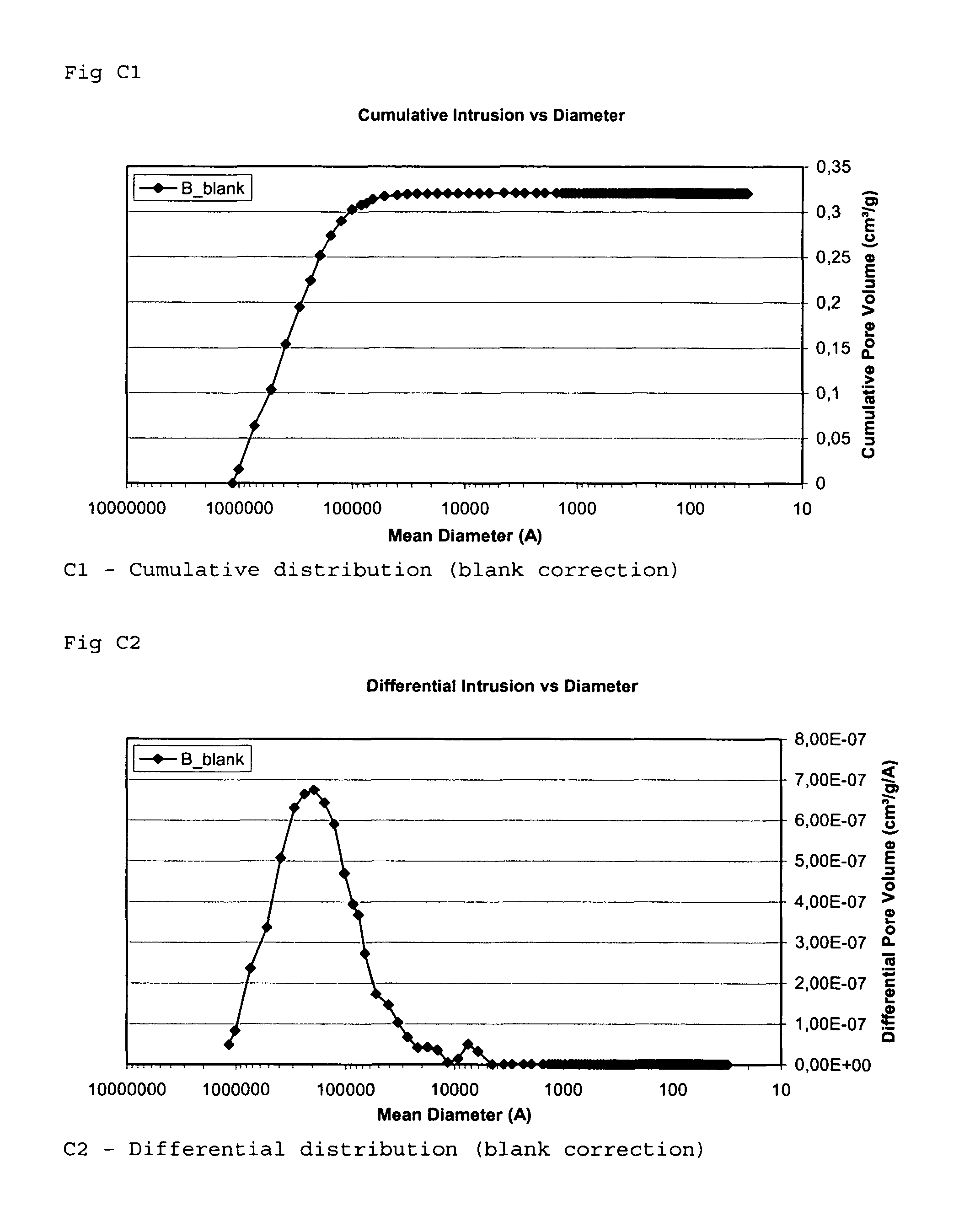Porous implant grain or granule
a technology of porous implants and grains, applied in the field of porous implants, can solve the problems of insufficient anti-inflammatory and/or antibacterial effects of grains according to these inventions, and achieve the effects of enhancing tissue healing, and promoting tissue growth or regeneration
- Summary
- Abstract
- Description
- Claims
- Application Information
AI Technical Summary
Benefits of technology
Problems solved by technology
Method used
Image
Examples
example 1
Determination of the Specific Surface Area of an Implant Grain or Granule According to the Invention
[0115]The inventors measured the specific surface area of an implant according to the invention, the possible increase of the specific surface area when treating an implant according to the invention, and compared the results with the specific surface area of start material and a commercially available grain.
[0116]The measurement methods used was the Hg method and BET method disclosed above in the section “Methods used for evaluation of mean pore volume, mean pore diameter and specific surface area”. Both methods was used because of comparison reasons.
[0117]The diameters of the grains or granules used were in the range of 0.7-1.4 mm.
[0118]The pore volume and the pore size (diameter) distribution for grain samples A to I was determined by a mercury porosimeter (Micromeritics AutoPore III 9410) in the range of 150 μm≧pore size diameter≧0.003 μm (30 Å). The surface tension of the mercury...
example 2
Comparison Trial for Determination of the Anti-Inflammatory and / or Antibacterial Effects of Untreated Rains According to the Invention
[0153]In a pilot experiment in rabbits the local bactericidal effects of untreated porous titanium granules according to the invention were compared to a commercially available bone substitute based on demineralized bone matrix. Under anesthesia the legs were shaved and a small incision made over the tibia bilaterally. A small pocket was bluntly dissected between the tibia and the tibialis anterior muscle. The two test materials were soaked with a diluted suspension of Staphylococcus aureus and 0.2 ml of each was placed into each rabbit. After 2 weeks the animals were euthanized and the local infection evaluated clinically. In 2 of 7 instances there was a clinical infection were the porous titanium granules according to the present invention were placed, whereas 6 of 7 sites with demineralized bone matrix were infected indicating a clear difference in...
example 3
Comparison Trial for Determination of the Anti-Inflammatory and / or Antibacterial Effects of H2O2 Treated Grains According to the Invention
[0154]In a pilot experiment in 5 rabbits the local bactericidal effects of treated porous titanium granules according to the invention were compared to the effect of untreated porous titanium granules according to the invention. Under anesthesia the legs of the rabbits were shaved and a small incision made over the tibia bilaterally. A small pocket was bluntly dissected between the tibia and the tibialis anterior muscle. The two test materials were soaked with a diluted suspension of Staphylococcus aureus and 0.2 ml of each was placed into each rabbit. The untreated granule according to the invention was placed into the right legs of the rabbits and the H2O2 in the left ones. After 8 days the animals were euthanized and the local infection evaluated clinically. The clinical results are shown in table 3 below.
[0155]
TABLE 3Clinical results of compar...
PUM
| Property | Measurement | Unit |
|---|---|---|
| mean length | aaaaa | aaaaa |
| specific surface area | aaaaa | aaaaa |
| mean length | aaaaa | aaaaa |
Abstract
Description
Claims
Application Information
 Login to View More
Login to View More - R&D
- Intellectual Property
- Life Sciences
- Materials
- Tech Scout
- Unparalleled Data Quality
- Higher Quality Content
- 60% Fewer Hallucinations
Browse by: Latest US Patents, China's latest patents, Technical Efficacy Thesaurus, Application Domain, Technology Topic, Popular Technical Reports.
© 2025 PatSnap. All rights reserved.Legal|Privacy policy|Modern Slavery Act Transparency Statement|Sitemap|About US| Contact US: help@patsnap.com



